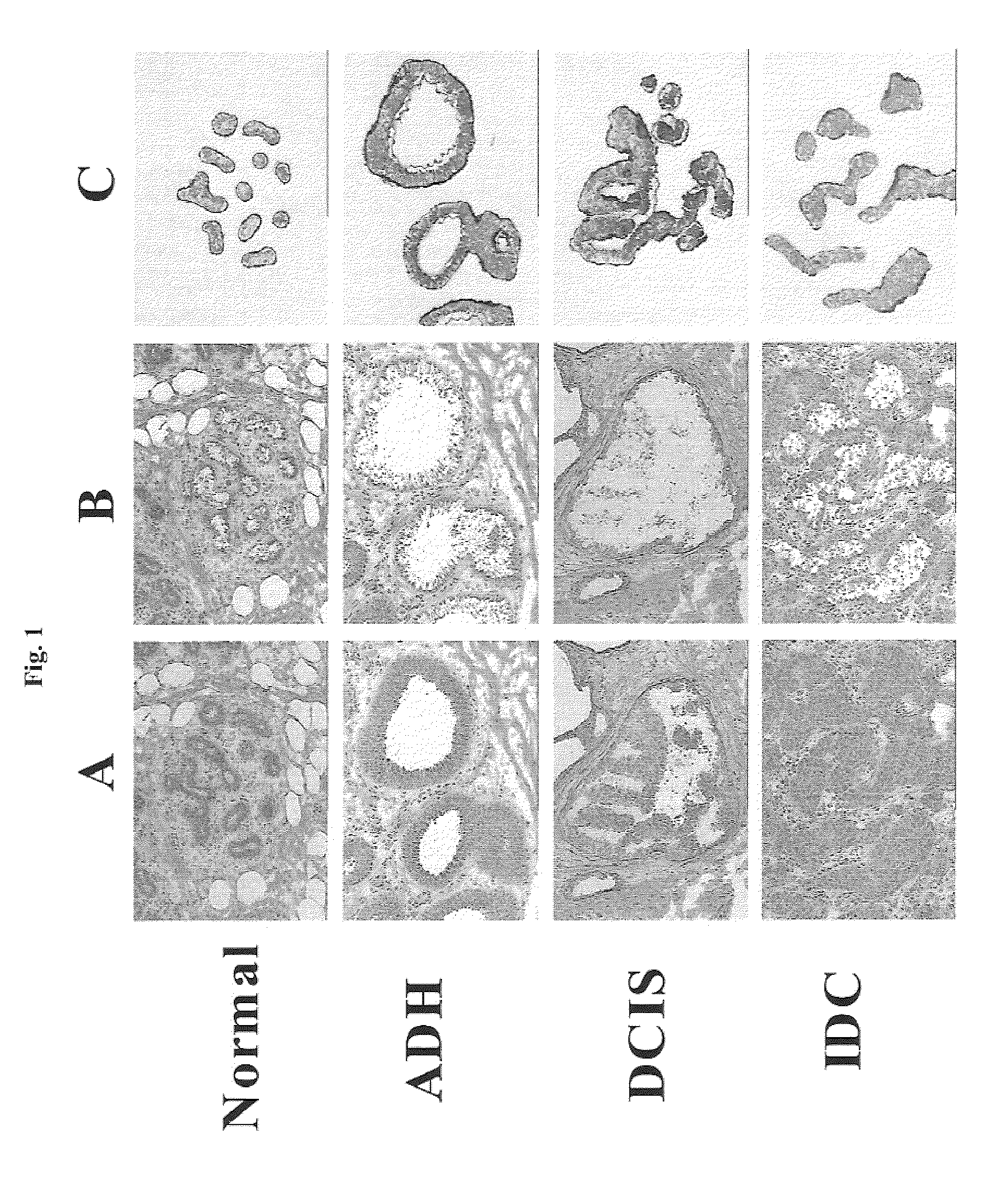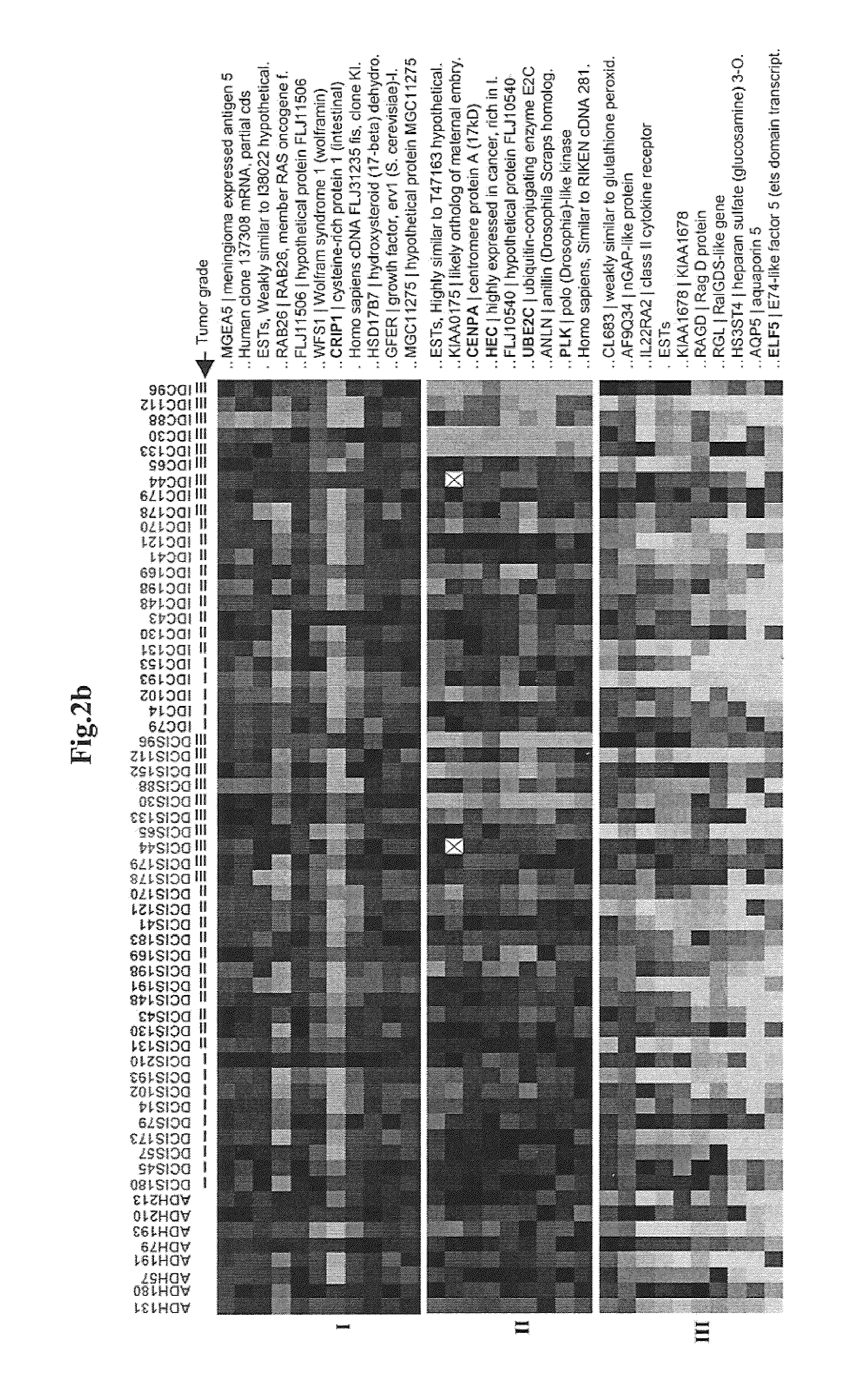Grading of breast cancer
a breast cancer and gene expression technology, applied in the field of breast cancer grading, can solve problems such as not routine in current clinical practice, and achieve the effect of increasing confiden
- Summary
- Abstract
- Description
- Claims
- Application Information
AI Technical Summary
Benefits of technology
Problems solved by technology
Method used
Image
Examples
specific embodiments
The present invention relates to the identification and use of gene expression patterns (or profiles or “signatures”) which discriminate between (or are correlated with) cells in various stages and / or grades of breast cancer. Such patterns may be determined by the methods of the invention by use of a number of reference cell or tissue samples, such as those reviewed by a pathologist of ordinary skill in the pathology of breast cancer, which reflect various stages and / or grades of breast cancer. Because the overall gene expression profile differs from person to person, cancer to cancer, and cancer cell to cancer cell, correlations between certain cell states and genes expressed or underexpressed may be made as disclosed herein to identify genes that are capable of discriminating between different breast cancer states.
The present invention may be practiced with any number of genes believed, or likely to be, differentially expressed in breast cancer cells. Approximately 12,000 genes we...
example i
Materials and Methods
Clinical specimen collection and clinicopathological parameters. All breast specimens were obtained from the Massachusetts General Hospital between 1998 and 2001. Thirty-six breast cancer patients were selected, 31 of which were diagnosed with two or more pathological stages of breast cancer progression, and 5 of which were diagnosed with pre-invasive disease only. Three healthy women who underwent elective mammoplasty reduction were selected as disease-free normal controls. Tissue specimens that demonstrated one or more pathological lesions (ADH, DCIS and IDC) were selected for the study. Cases of ADH were selected as proliferative epithelial lesions that possessed some, but not all, of the features of carcinoma in situ (Page, D. L. et al. (1992)) and most closely resemble those lesions described as CAPSS (Oyama, T. et al. and Fraser, J. L. et al.). DCIS and IDC were classified (histological grade) according to the European classification (Holland, R. et al.) a...
example ii
Genes Showing Significant Differences in the Pair-Wise Comparisons of Normal Vs. ADH, normal Vs. DCIS and Normal Vs. IDC by Linear Discriminant Analysis
2-3 independent LCM captures were made from the same breast biopsy for each disease state (normal, ADH, DCIS or IDC), and RNA from each capture was amplified, labeled, and hybridized to 2 identical 12,000-element microarrays, resulting in from 4 to 6 data points per gene per disease state. The replicate data points were averaged to represent the expression level of each gene at each cellular state, which was further transformed as data points which are the log 2 value of the ratio of data from patient matched disease / normal samples or the log 2 value of the ratio of data from patient matched IDC / DCIS samples.
PUM
| Property | Measurement | Unit |
|---|---|---|
| thickness | aaaaa | aaaaa |
| concentration | aaaaa | aaaaa |
| cell morphology | aaaaa | aaaaa |
Abstract
Description
Claims
Application Information
 Login to View More
Login to View More - R&D
- Intellectual Property
- Life Sciences
- Materials
- Tech Scout
- Unparalleled Data Quality
- Higher Quality Content
- 60% Fewer Hallucinations
Browse by: Latest US Patents, China's latest patents, Technical Efficacy Thesaurus, Application Domain, Technology Topic, Popular Technical Reports.
© 2025 PatSnap. All rights reserved.Legal|Privacy policy|Modern Slavery Act Transparency Statement|Sitemap|About US| Contact US: help@patsnap.com



